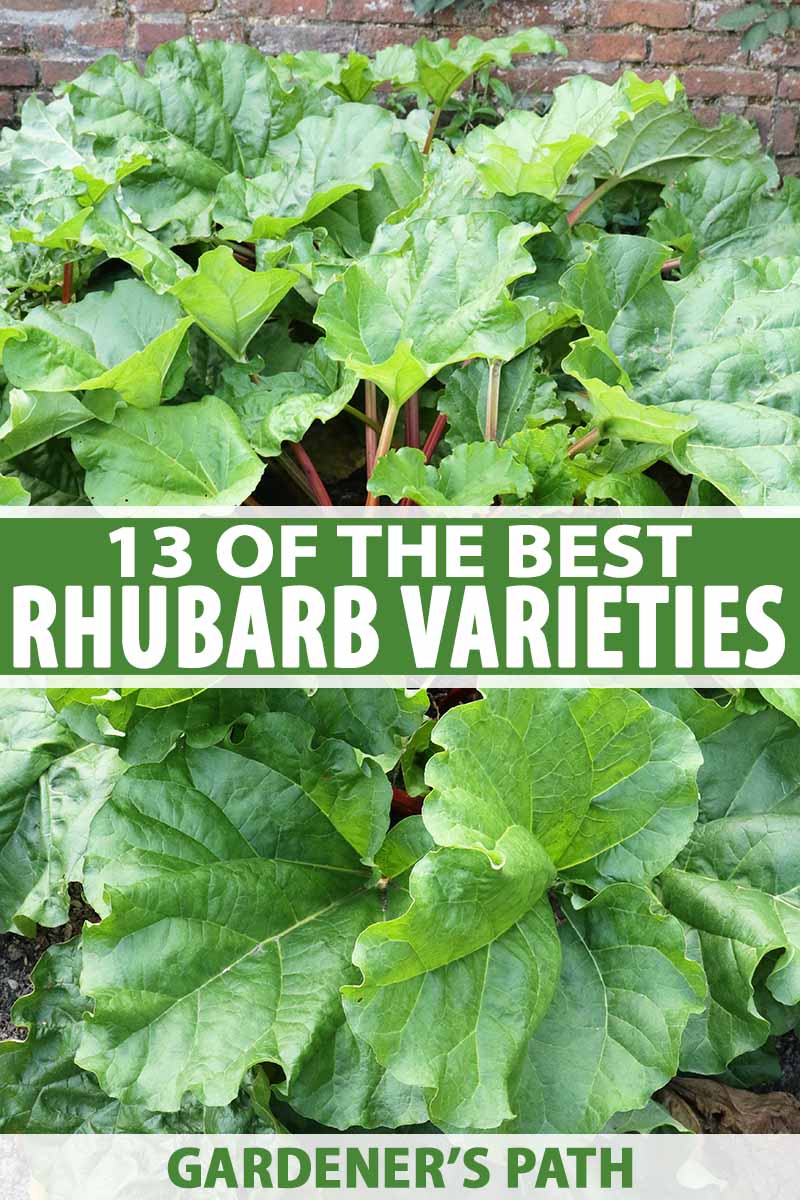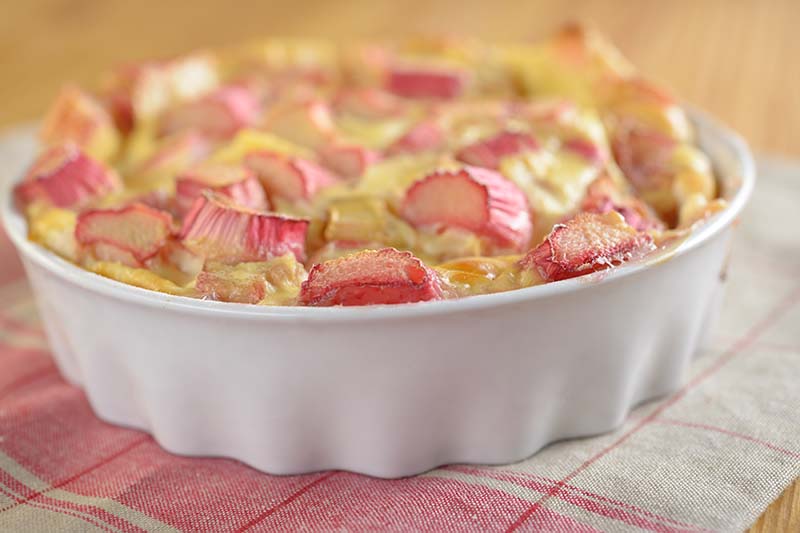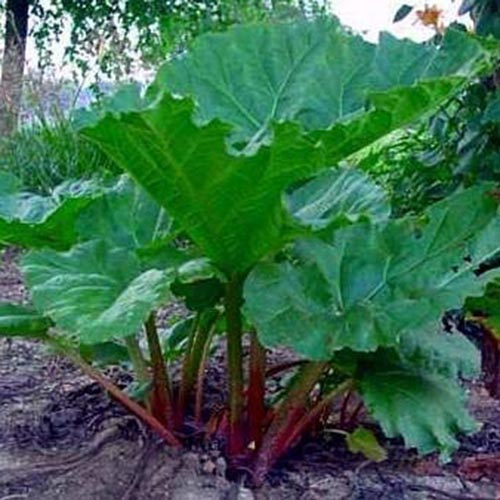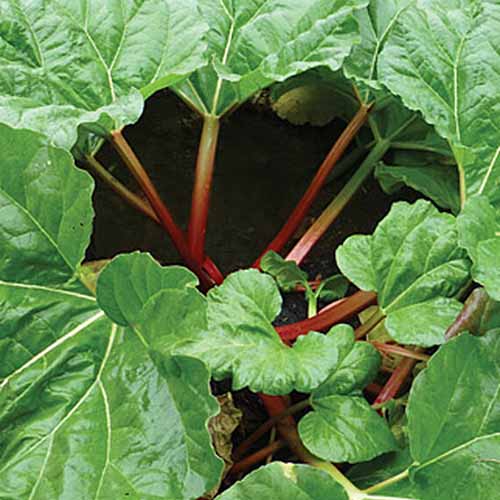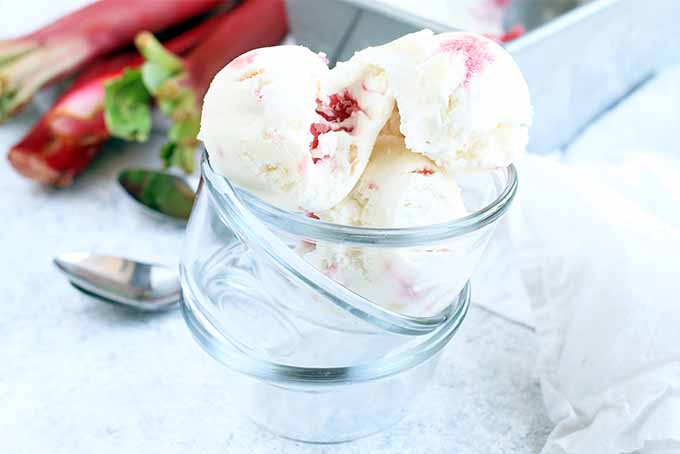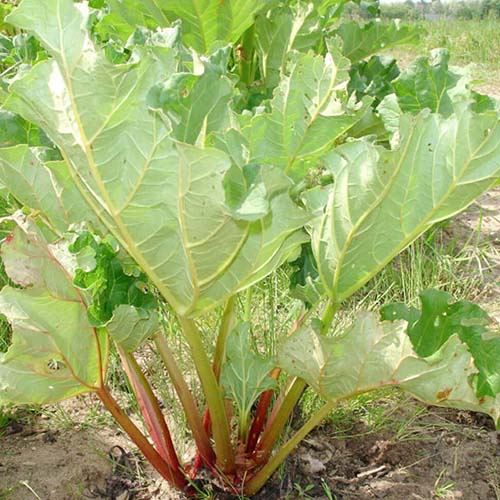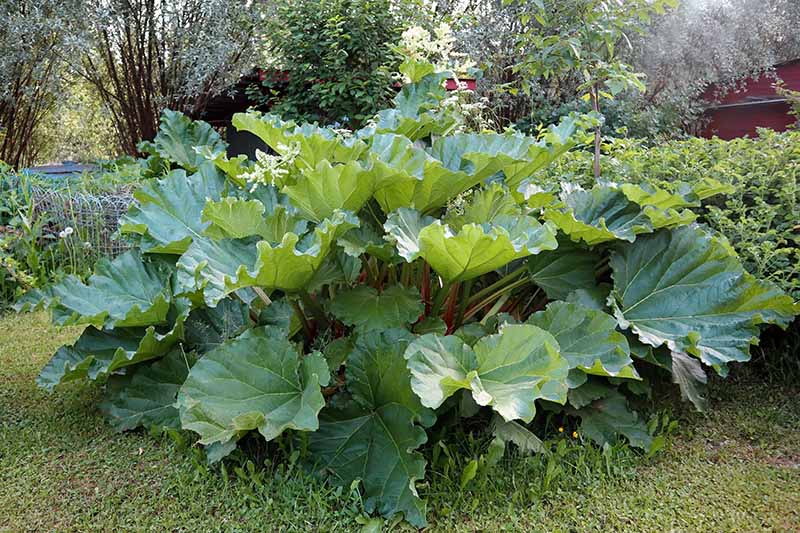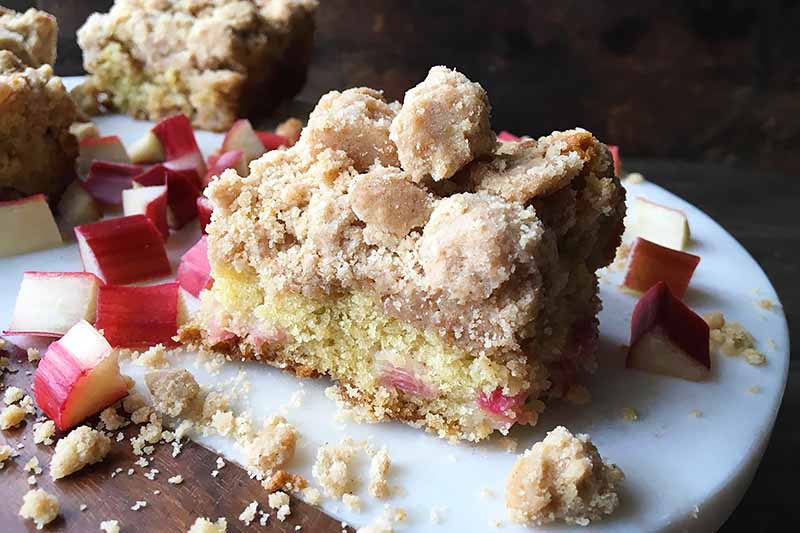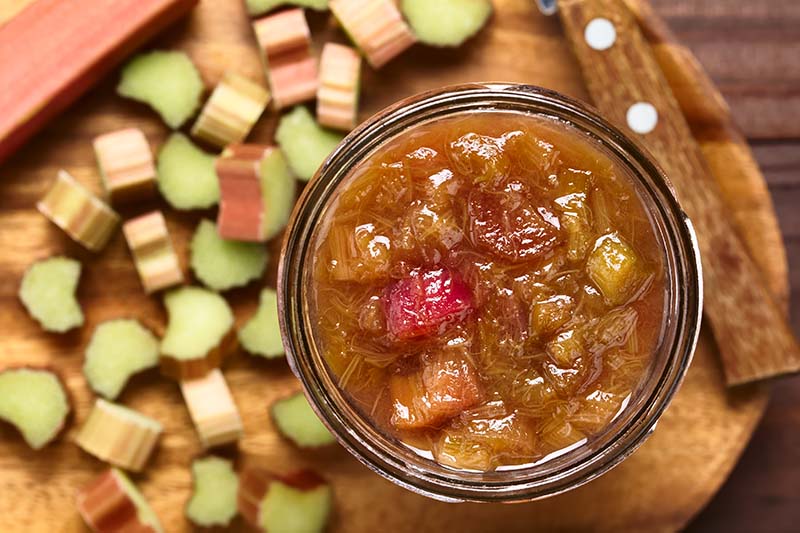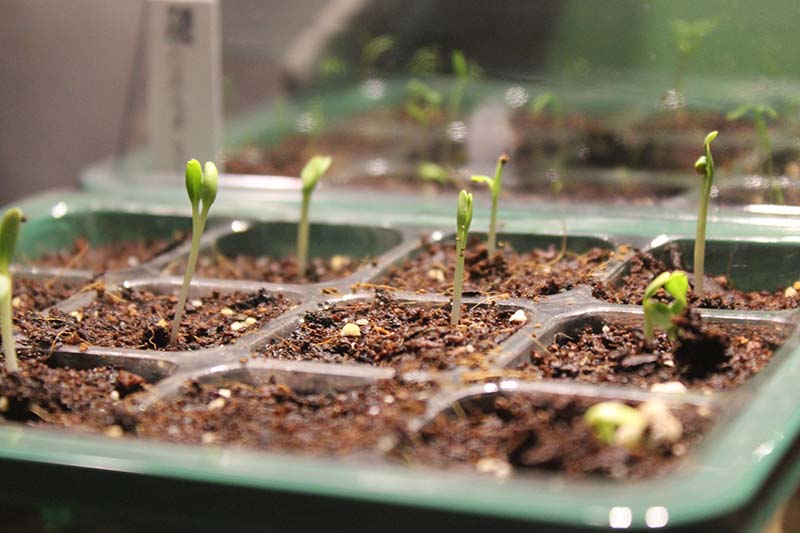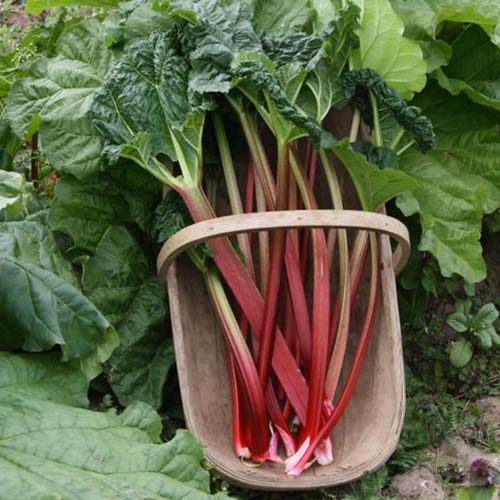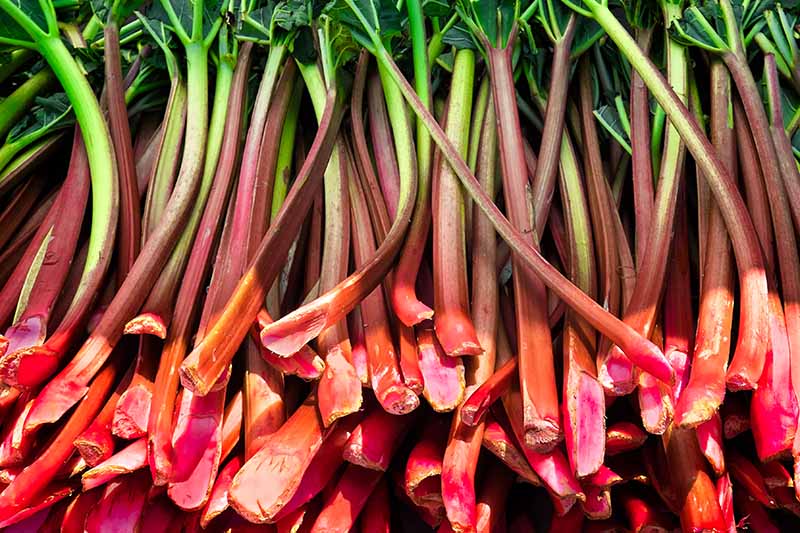Like celery, this plant features a firm petiole, or stalk, which is edible. Oh, so very edible. Especially when you add lots of sugar to it. However the leaves are not edible, as they contain high amounts of oxalic acid as well as calcium and potassium oxalate salts, collectively called oxalate. While it’s technically a vegetable, it’s almost always used as a fruit in cooking, used in sweet, or sweet-and-tart recipes. I’m not sure I’ve ever eaten a savory side dish made from rhubarb with my Sunday roast. Have you? Let me know in the comments if you have, as I’m curious! We link to vendors to help you find relevant products. If you buy from one of our links, we may earn a commission. It says something about rhubarb that plants keep on producing pie-ready stalks for up to ten years. And here in the North, we use our pie plant. Just about every Alaskan enjoys rhubarb pie, especially with a huge helping of vanilla ice cream.
Whether you live in Alaska or somewhere much warmer, there’s a rhubarb variety for you to grow in your own garden. You can even force stalk production in the wintertime. Let’s get growing!
A Quick Primer
Rhubarb generally grows best in well-draining, fertile soil that’s rich in organic matter. Consistent moisture is important, but it doesn’t like wet feet. Container growing is an option. Grown as a perennial in cooler regions, it can be grown as a winter annual in southern areas.
These plants like to spread out, so you’ll need to space them 3-4 feet apart when planting. There are four ways to plant this tasty pie filling.
Sow seeds.
Plant crowns, aka one-year-old rhubarb plants from a nursery.
Snag divisions from a friend’s rhubarb.
Plant bare root balls, which are dormant rhubarb plants that have been excavated and wrapped in moss or soil to keep moist. These can be confusing to gardeners who aren’t prepared for the dead, woody look of the root. Gently scrape away the dirt until you find the pale, small bud, which should be pointed upward when you plant the root. Here’s the key: leave the bud and about an inch of the root ball above the soil to prevent the bud from rotting.
13 of the Best Rhubarb Cultivars
There you have it! Now, let’s find the best cultivar for you. Some are heirlooms and others are hybrids – I’ll let you know which is which as we learn more about them. Looking to add this tasty veggie to your garden? See our complete rhubarb growing guide here.
1. Cherry Red
With its bright red stalks, the hybrid variety ‘Cherry Red’ (R. x hybridum) lives up to its name – plus it’s one of the sweetest and least tart varieties around. This makes it ideal for those who have never tasted rhubarb before and are feeling anxious about the famously puckery nature of the vegetable. And as a bonus, you’ll use less sugar in your pie recipe – maybe. ‘Cherry Red’ thrives in USDA Hardiness Zones 2-8, but it particularly loves the rolling hills and cooler climate of northern California. Growing up to three feet tall and wide at maturity, it makes a striking ornamental plant, though I don’t see how anyone could not cut stalks for pie, too! Plant ‘Cherry Red’ in full sun or part shade for best results, and enjoy fresh sticks from April to June.
2. Chipman’s Canada Red
Also known as Canadian Red, ‘Chipman’s Canada Red’ is another ruby-colored cultivar. This one features big, succulent stalks, matures to three to four feet tall and wide, and thrives in Zones 3-8. Developed in chilly Winnipeg, Manitoba, Canada, this extra sweet variety is perfect for northern gardeners.
‘Chipman’s Canada Red’ Plant outdoors in the fall, winter, or early spring (as soon as the earth thaws). Harvest from April to June, but wait until at least one year has passed since you planted the crown for the best yield. You can buy a 2-4 year old plant in a #2 container from Nature Hills Nursery.
3. Crimson Red
The favorite cultivar of the Pacific Northwest, ‘Crimson Red’ loves damply cool temperatures. The bright red stalks will remain bright crimson and happy throughout all the drizzly Oregon and Washington days, so you PNW folks can rejoice.
‘Crimson Red’ Of course, you can grow sweet-tart ‘Crimson Red’ even if you don’t live in the Pacific Northwest, as it thrives in Zones 3-8 and loves sunshine just as much as cloud cover. You’ll be able to enjoy your own fresh ‘Crimson Red’ in just one year. Like other cultivars, it can grow up to three to four feet tall and three feet wide. Harvest tasty ‘Crimson Red’ stalks from April to June for the sweetest flavor. You can get bare root balls to plant in the fall or two to four weeks before the average last winter frost date from Burpee.
4. German Wine
The variety ‘German Wine’ (R. x coltorum)is a hybrid that’s excellent for making, well, wine! Connoisseurs of rhubarb wine say it resembles a nice rosé wine, so vinos take note. Reaching just two feet high and spreading two to three feet wide at maturity, this cultivar is a little smaller than its siblings, making it a good option for container growing, or in smaller spaces. The unique pinky-green speckled stalks are ready for harvest from late spring to early summer. This variety is also one of the sweetest around. I can just imagine drizzling a sauce made from its stalks all over my vanilla ice cream, or even making rhubarb swirl ice cream, as in this recipe from our sister site, Foodal. Delicious! In Zones 3-8, plant ‘German Wine’ from a root ball or crown division as soon as the earth thaws in the spring and enjoy your first harvest in a year.
5. Glaskin’s Perpetual
This good-natured variety grows happily in Zones 3-9, though it prefers cooler summers if possible. And it’s a variety that you can harvest a little sooner than some of the others. Here’s how: start the seeds indoors at the end of spring or in early summer. Let them grow all the way until the ground thaws the following spring. Or, if the ground doesn’t get that cold where you live, simply transplant them outside about four weeks before the average last frost date. You’ll know the red-and-green stalks are ready for harvest when they reach 12-14 inches in length. Cut a few outer stalks with a knife at the base of the plant, and enjoy! ‘Glaskin’s Perpetual’ But make sure to only take a few stalks during the first harvest – leave most behind for the plant, which only grows to two feet tall and wide at maturity. The following year, you’ll have so many stalks to harvest that you won’t know how to use them all. Thanks to its small stature, this variety would be my go-to for container gardening. And here’s the really neat thing: this variety can be harvested all the way from early spring and into late fall, hence its name. Where other varieties turn too bitter as the summer wears on, ‘Glaskin’s Perpetual’ has less oxalic acid than its siblings making it stay sweeter longer.
6. Hardy Tarty
Extremely slow to bolt, heirloom variety Hardy Tarty (also known as ‘Colorado Red’) produces reddish stalks that are as deliciously sour as the name suggests. And it’s another cultivar that can tolerate warm temperatures despite its classified Zones of 3-8, making it an excellent choice for southern and northern gardens alike. Since it’s already so tart and rhubarb gets tarter the later the season stretches, you can harvest this variety from late spring through the entire summer. This cultivar grows two to three feet tall and wide at maturity, and loves a sunny spot in the garden.
7. Holstein’s Bloodred
For what I feel are obvious reasons, this heritage variety makes me feel like eating a slab of juicy red cow meat. And I’m vegetarian! ‘Holstein’s Bloodred’ stalks are red as blood, through and through. And it’s a champion grower, yielding five to ten pounds of stalks from mature, established plants. Also, the plant can grow up to four feet tall and five feet wide. That’s a lot of ‘Holstein’s Bloodred.’ You could pretty much set up a roadside stand and sell it to pie-hungry folks in your area. The juicy red stalks would draw crowds. People who don’t know much more about rhubarb than that it’s excellent in pies are apt to think of its stalks as red. There’s a misconception that green stalks mean a plant is unripe, which isn’t true. It all depends on the variety. But this variety has that classic rhubarb look that can work in your favor as a roadside fruit and veg seller. (You’re welcome for the idea, by the way. Wink, wink.) Grow in Zones 3-8 and provide plenty of sunshine. Enjoy your ruby-red crop from April to June.
8. KangaRhu
For a brilliant crimson stalk that keeps its signature red color even once it’s cooked, try the adorably named ‘KangaRhu’. An excellent choice for midwest or even southern gardeners, ‘KangaRhu’ is hardy in Zones 4-8 but can take some heat, too. It was actually developed from Australian rhubarb seeds to produce a cultivar that could withstand hot temperatures! Stalks are as tart as they are red, so this cultivar is ideal for those who love mouth-puckering treats. The plant grows up to three feet tall and wide at maturity. Grow in part shade or full sun for a harvest you can enjoy from late spring to early fall.
9. Prince Albert
Named after Queen Victoria’s husband, the heirloom variety ‘Prince Albert’ has been around for over a hundred years. With reddish-green stalks that turn rose-pink when cooked, ‘Prince Albert’ makes a gorgeous pie filling or jam. Stalks are larger and juicier than other varieties, with a perfect blend of tartness and sweetness. Some even say ‘Prince Albert’ has the best flavor of all the varieties, but it depends on who you ask. Ideal for forcing indoors or growing outdoors in Zones 3-8, harvest this variety in early April to late May for the best flavor. The plant grows anywhere from three to four feet tall and wide.
10. Riverside Giant
An almost exclusively green-stalked culviar, ‘Riverside Giant’ is one of the cold-hardiest varieties available. It can withstand temperatures as low as -40°F, making it hardy in Zones 3 (or even 2b in a cold frame) to 7.
‘Riverside Giant’ grows taller and spreads wider than most other varieties – up to five feet tall and four feet wide – but it’s also one of the slowest to grow and you’ll have to wait three years before your first harvest. That’s why this variety is ideal for those with patience and a need for an edible hedge. ‘Riverside Giant’ would look nice next to your front doorstep, and then you could harvest it from April to June for tart pies. This variety is not to be confused by the “giant rhubarb” plant, Gunnera manicata, which is a different species, not related to rhubarb at all, except in its common name.
11. Sunrise
Ideal for those who love to harvest rhubarb to store for later use, ‘Sunrise’ freezes and cans exceptionally well. This is due to its extra-sturdy, thick pink stalk, which isn’t prone to turning mushy and gross even after sitting in the freezer for three months. Perfect for anyone who craves a rhubarb pie in the deep of winter and doesn’t have any fresh stalks on hand! The plant matures to three feet tall and wide and grows in Zones 3-8 for an April to June harvest.
12. Timperley Early
Do you live in Zone 8 or above? Hybrid ‘Timperley Early’ is the perfect cultivar for you because it’s one of the easiest to force indoors, and one of the very first to mature. You can harvest ‘Timperley Early’ as early as February or March if you force it indoors, or from April to June if you grow it outdoors. Growing up to two feet wide and three feet tall, this cultivar’s stalks are pinkish and pretty, with a deliciously sweet-tart flavor. Some even call it the best-tasting rhubarb variety of all, and it would absolutely shine as the star of a rhubarb coffee crumble cake, like this one from our sister site, Foodal.
13. Victoria
‘Victoria’ is one of the most popular rhubarb varieties in the world and it is still the most widely available variety today. Developed in 1837 at the start of Queen Victoria’s reign, this variety pioneered the use of rhubarb in British and American cuisine. With fat red-and-green stems and a sweet, lightly tart flavor, you can use ‘Victoria’ in a slew of desserts, savory dishes, sauces, jams, and even punch.
This heirloom variety grows well in high and low altitudes alike, and it’s exceptionally easy to start from seed. So much so that it’s the kind I love to grow indoors during the winter for a summer transplant to the garden. But there’s something you need to know about growing any rhubarb variety from seed: the seed pod does not necessarily keep the characteristics of its parent plant. It will be the same cultivar, but it may not have the same ruby-red stalk, stem thickness, or even size of Mama Rhubarb.
‘Victoria’ So if you love certain characteristics of Victoria, grow it from a root ball or division, or buy it in crown form, like this set of six small ‘Victoria’ plants from Burpee. Grown from seed, ‘Victoria’ takes one to two years to mature and reaches mature dimensions of three feet tall and wide. If you grow it from a root ball, division, or crown, you can expect to harvest in about a year.
‘Victoria’ Seeds Available from Eden Brothers ‘Victoria’ needs full sun and cool weather to thrive, but you can grow it indoors or as an annual in warmer climates. Find seed packets or one ounce, 1/4 pound, or one-pound bags at Eden Brothers.
A Tart Delight for Every Tongue
Trust me: if you haven’t tried cooking your own garden-grown rhubarb before, you’re missing out. Big time.
I love eating a slice of rhubarb pie at my favorite pie restaurant up here in Alaska while looking out of the window at the very patch of large, curly leaves and red-green stalks from whence it came. If you’ve never visited Alaska and you want to taste something we northerners enjoy in the summertime, grow your own pie plant and whip up a special creation come spring, summer, or even fall, depending on your chosen variety. They’re all excellent, but we’d love to know: do you prefer sweet or tart rhubarb? Let us know in the comments! And don’t forget to check out these articles on additional pie-ready vegetables to grow in your garden:
Why Buy Sweet Potatoes When Growing Your Own Is So Easy? The Complete Guide to Growing Winter Squash
Photos by Laura Melchor, Meghan Yager, and Nikki Cervone © Ask the Experts, LLC. ALL RIGHTS RESERVED. See our TOS for more details. Product photos via Burpee, Eden Brothers, Nature Hills Nursery, Outsidepride, and Treasures by Lee. Uncredited photos: Shutterstock. With additional writing and editing by Clare Groom and Allison Sidhu.

